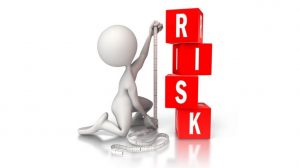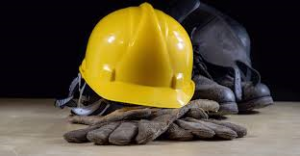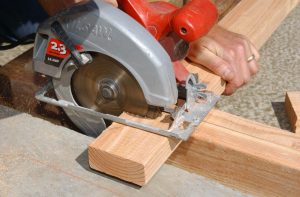 The short answer is “because it’s every employer’s duty”. Being an employer is about much more than just obeying the letter of the law. You also want to make your workforce is as productive as possible and you need to attract talented people by being a good place to work.
The short answer is “because it’s every employer’s duty”. Being an employer is about much more than just obeying the letter of the law. You also want to make your workforce is as productive as possible and you need to attract talented people by being a good place to work.
The bottom line is that employers have a legal obligation to manage health and safety in the workplace. That means controlling risk. Risks can only be controlled once they have been identified and quantified.
That’s why it’s the responsibility of every employer to conduct a health and safety risk assessment. Defining the hazards present in the workplace so that action can be taken to manage them.
The law is crystal clear on this point. Businesses with five or more employees must not only conduct a risk assessment, but also record the findings in a written report. This information must be shared with employees carrying out the tasks that have been assessed, including those that may work in the same area.
Organisations with fewer than five employees are still required to assess the risks in the workplace. There’s no obligation to write the results down, but there’s a strong case for doing it anyway. Creating a written report clarifies matters, focuses minds and makes it much easier to update the assessment when things change, for example, if there is a new process or new equipment is introduced.
If you are confident you understand the risks in your workplace, you can conduct your own workplace risk assessment, however if you’re in any doubt about any aspect of the assessment or the level of risk, it’s wise to call in the experts. Conducting expert risk assessments is a key aspect of the service available from Walker Health and Safety Services Limited.
Before deciding whether you need expert advice, consider the worst-case scenario. Imagine finding yourself in court because of a Health and Safety incident in your workplace. That’s when an inaccurate or incomplete risk assessment can cost you a big fine, and perhaps even close the business down.
If you need to conduct a risk assessment or are not sure the one you have in place is fit for purpose, don’t hesitate to contact Walker Health and Safety Services Limited for advice.
 Personal Protective Equipment (PPE) is provided by employers so employees can carry out their job. There are responsibilities that employees must take responsibility for when dealing with PPE. See previous blog Link.
Personal Protective Equipment (PPE) is provided by employers so employees can carry out their job. There are responsibilities that employees must take responsibility for when dealing with PPE. See previous blog Link.
The PPE Regulations stipulate that companies are unable to charge for PPE (under section 9 of the Health & Safety at work Act 1974 – see ACOP link below).
28 Under section 9 of the HSAW Act, no charge can be made to the worker for the provision of PPE which is used only at work. Section 9 of the HSAW Act states:
‘No employer shall levy or permit to be levied on any employee of his any charge in respect of anything done or provided in pursuance of any specific requirement of the relevant statutory provisions’. Section 9 applies to these Regulations because they impose a ‘specific requirement’, for example to provide PPE. It also relates to all charges including returnable deposits. An employer cannot ask for money to be paid to them by an employee for the provision of PPE whether returnable or otherwise.’
29 If employment has been terminated and the employee keeps the PPE without the employer’s permission, then provided it has been stipulated in the contract of employment, the employer may be able to deduct the cost of replacement from any wages owed.
From guidance, levy’s or deposits are not be appropriate, so therefore we would deter this course of action.
If PPE is constantly being asked for as it is defective, consider discussing defective wear with the supplier or the manufacturer. Request a credit or replacement FOC as they are not fit for purpose under Trading Standards.
If employees are asking for frequent replacement of PPE, consider looking to discreetly mark the item with UV marker pen with a serial number much the same as asset tags on company property to check that the item presented for replacement are those that were recently issued.
If there are repeat offenders this would need to go down the HR disciplinary route.
Contact us should you wish to discuss this topic.
 Potential Circular Saw Safety Mistakes
Potential Circular Saw Safety MistakesIt is statistically shown that more severe, debilitating injuries occur from the table saw than any other woodworking machine or power tool. When it comes to handheld woodworking power tools, the circular saw may take that crown as the most dangerous.
Safety Equipment
While using a circular saw always remember to wear the safety equipment. Never forget things like
These common safety protections will reduce the chances of accidents. Don’t take them too lightly. They sound silly, but one of the most major facts of the circular saw safety guard.


If put down incorrectly, the user could get injured. Do not put the saw down before it has stopped moving. Place the saw on its side, and you’ll avoid this problem entirely.
I feel like this one is obvious once you think about it, but not something we ever stop and actually think about. If your finger is on the trigger and you trip and fall, you might press the trigger and start the saw, which would probably have bad consequences. Find another way to carry your saw.
This seems like a good idea. If your piece is supported and clamped on both sides, then nothing will fall to the floor when you’re done cutting. I suppose that logic is technically correct, but you’ll rarely be able to finish cutting without encountering kickback. The two pieces sag toward the middle as you finish the cut, pinching the blade and causing kickback.
If kickback occurs, the saw will fly right into you. Stand a little to the left or right, therefore if kickback occurs, you wont be directly hit by the saw.
This increases the likelihood of kickback. Enough said.

This is bad for a couple reasons: A) The more saw that needs to go through the wood, the harder the saw has to work. The harder the saw has to work, the more likely it is to kickback. Keeping the saw at the appropriate depth therefore reduces kickback. B) The deeper the saw, the more the blade will be exposed. This increases the likelihood that it will come in contact with a human appendage.

The appropriate saw depth is 1/4″ more than the piece you’re cutting. Any deeper, and you’re setting is too deep!
Yes, wood has splinters, and gloves seem like a good idea. But they increase the risk of your hands getting caught in the saw, so they are a big no-no when operating any power tool.
I hope there was at least one thing on this list you learned about operating a circular saw, and the circular saw safety mistakes people commonly make. If so, make sure to subscribe to my email list; I plan to do a whole sequence of posts for all sorts of power tools, so make sure you don’t miss out!
Tips
Contact us if you wish to discuss this topic.
 The Health and Safety at Work Act, etc 1974 states that employers should provide “such information, instruction, training and supervision as is necessary to ensure, so far as is reasonably practicable, the health and safety at work of his employees”. The Management of Health and Safety at Work Regulations 1999 further require that employers provide employees with adequate health and safety training both on recruitment and when the risks to which they are exposed change, for example, where they move to a new role or when new work equipment is provided.
The Health and Safety at Work Act, etc 1974 states that employers should provide “such information, instruction, training and supervision as is necessary to ensure, so far as is reasonably practicable, the health and safety at work of his employees”. The Management of Health and Safety at Work Regulations 1999 further require that employers provide employees with adequate health and safety training both on recruitment and when the risks to which they are exposed change, for example, where they move to a new role or when new work equipment is provided.
The Management of Health and Safety at Work Regulations 1999 go on to state that training should be repeated periodically where appropriate, be adapted to take account of any new or different risks and take place during working hours. Other sets of regulations which require training of employees include the Health and Safety (Display Screen Equipment) Regulations 1992, the Health and Safety (First-Aid) Regulations 1981, the Provision and Use of Work Equipment Regulations 1998 and the Regulatory Reform (Fire Safety) Order 2005.
Organisations that have their health and safety management systems certified, for example to BS OHSAS 18001 or ISO 45001, are also required to conform to requirements concerning competence.
Unfortunately, when it comes to work-related training, there is no one-size-fits-all. Employers should consider who in their organisation needs training, what training should be provided, when, by whom, and when training should be repeated and refreshed. Consideration should also be paid to whether staff require formal qualifications for their role, such as facility managers, first aiders, or the maintenance teams responsible for legionella safety.
Ensure Employees follow Your Training: 5 Top Tips. Click here
Training – Contact Us for your training requirements or to discuss training solutions. Click here to look at our website training page.
We have a great post detailing 7 Common Workplace Safety Hazards. Due to the popularity of this piece, we have now created an infographic to support this. If you would like to share this image please scroll down for the embed code.
Contact us if you require further information.